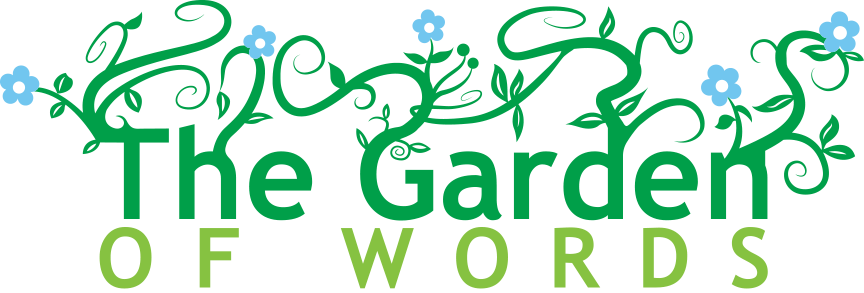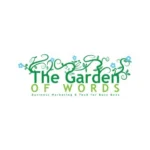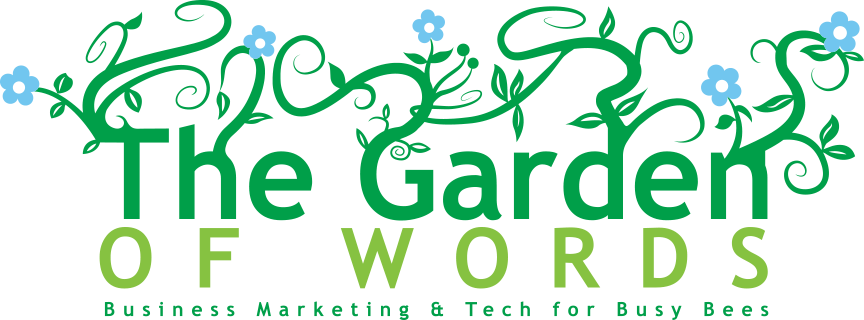You can have the best content in the world, but if your newsletters are hard to read, you haven’t done your job as a communicator. Okay, sorry to start out on a negative, but sometimes you’ve just gotta rip that Band-Aid off, folks.
It’s not just what you write, it’s how you write it, how you organize it, and how it looks visually. We want everyone who subscribes to your newsletters to read every bit of it—and if they don’t, it won’t be because you created a newsletter that’s impossible or unpleasant to read!
Note: These tips apply to blog posts as well.
9 Tips for Writing Readable Newsletters

There are certainly more than 9 things you can do to create readable newsletters, but these are our go-to’s:
1. Use headings. Headings are a great way to make your email or newsletter scannable—readers know at a glance what’s in the content and can navigate to the sections that are of the most interest to them. Here at The Garden of Words, we love using headings for each section of a newsletter, but be sure to put them in bold so they stand out from the rest of your copy!
2. Use numbered lists. People love lists, so anytime you can list tips (like we’ve done in this blog post), do it. Just like headings, lists are quickly scannable and absorbed. Numbered lists work great for step-by-steps or when you have “3 Tips for XYZ” or “5 Ways to ABC.”
3. …or bullet points. One section can just be text and an image, the next can be a numbered list, and another can be bullet points. Bullet points are similar to numbered lists but have a more general application.
4. …or simply bold the name of each item on your list. We do this when we’ve already used numbered lists or bullet points, and adding more in would look distracting. Got a short list of plant descriptions? Use your heading, a bit of copy underneath, then left-justify your plant names in bold. Then the rest of your description is in regular weight. Nice and clean.
5. Vary the length of each section. While some sections can be longer than others, avoid one very long section after another very long section. If you have blocks of content that are longer, break them up with shorter, quick reads.
6. Break up long paragraphs. Make a paragraph too long and your readers will stop reading and move to the next section. Separate those paragraphs up into 2–3 shorter ones to give the eyes a break.
7. Include buttons. Yes, we know you can simply have clickable links, but there’s something irresistible about a button that just makes you want to click the dang thing. We use them judiciously (and not in every section, by the way) but effectively, like for “Contact Me,” “Buy the Book, “Read the Blog,” or “Get the Details.”
8. Vary the size and placement of your images. Not every section needs to have an image, and not every image needs to be exactly the same size and placement within the text. That being said, we aim for a clean look to our newsletters, so we actively avoid using every type of image design available in one newsletter. If it’s a “beauty shot,” we make it larger and more noticeable, and if it’s a logo it can be smaller and left justified, for example.
When a section has multiple images (“My Top 3 Summer Perennials”), you can either include a small image with each plant description, or create a strip of the 3 images side-by-side.
9. Scan your newsletter when you’re done. Okay, now that you’ve gotten it all down in newsletter form, start from the top and read it as though you were a subscriber. Have a critical eye for length, layout, and content, and make any necessary adjustments. Some of our clients have a set sequence of information (intro, blog post, monthly tip, call to action), so while those layouts won’t change, we’ll sometimes switch from bullet points to a numbered list, or vary the placement of an image. For the rest of you who have a more eclectic newsletter format, feel free to rearrange blocks of content so the reading flow is optimized.
We used every single one of these tips in this blog post. For us, it’s fairly automatic, and it will become automatic for you as well. Train your eye to present written content that is easily consumed—your content should be scannable, have points of interest and places for your eyes to rest, be visually appealing with well-placed and engaging images, and make your readers look forward to the next newsletter.
And if you’re having difficulty pulling this off? Or simply don’t have time to focus on it? Let us help you; it’s what we do! Email Katie for a free discovery call to talk over the options.



